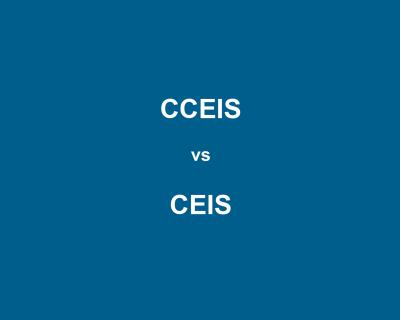This webinar focused on key components of the new significant disproportionality regulations presented in §20 U.S.C. 1418(d) and 34 CFR §§300.646 and 300.647. The regulations require states to determine whether significant disproportionality based on race/ethnicity is occurring with respect to the identification of children as children with disabilities, including identification as children with particular impairments; placement of children in particular educational settings; and incidence, duration, and type of disciplinary actions, including suspensions and expulsions. Timeline for state compliance is July 1, 2018, and states must make significant disproportionality determinations using new methodology during SY 2018-19. The webinar highlighted new OSEP Significant Disproportionality Resources and included resources that comprise IDC 's Disproportionality and Equity Resource Collection. The webinar was part of IDC's Discipline Peer-to-Peer Exchange.
Discipline Peer-to-Peer Exchange
Resource Files & Links
Related Content
Format: Applications and Spreadsheets
Maintenance of Effort (MOE) Reduction Eligibility Decision TreeThe Maintenance of Effort (MOE) Reduction Eligibility Decision Tree guides SEAs and LEAs/ESAs through a series of questions to determine an LEA’s/ESA's eligibility to reduce MOE.
Format: Toolkits
Success Gaps Toolkit: Addressing Equity, Inclusion, and OpportunityThe Success Gaps Toolkit presents a process for using data and the Success Gap Rubric to identify root causes of gaps between groups of children in districts or schools. These success gaps occur when the education system is not meeting the needs of all groups of children and outcomes for some groups are different than outcomes for most groups. The toolkit, with its process and materials, provides a manageable and defined way for districts or schools to identify success gaps that are present and their root causes and then make a plan for addressing the gaps. The success gaps may be the graduation rate of students who are English learners compared to the rate of all other children, the out-of-school suspension rate of children who are Black compared to the rate of all other children, the identification of children who are Hispanic as children with specific learning disabilities compared to the identification of all other children, and other gaps.
Format: Quick Reference
A Comparison of Mandatory Comprehensive Coordinated Early Intervening Services (CCEIS) and Voluntary Coordinated Early Intervening Services (CEIS)In December 2016, OSEP finalized new regulations on significant disproportionality (34 CFR §300.646). These regulations enforce the use of IDEA funds for mandatory CCEIS, which LEAs provide upon identification of significant disproportionality, and distinguish use of funds for CCEIS from the use of IDEA funds for voluntary CEIS. This resource is a handy chart that outlines the differences between CCEIS and voluntary CEIS.
Format: Applications and Spreadsheets
Equity Requirements in IDEAThis resource compares the three equity requirements in IDEA (disproportionate representation, significant discrepancy, and significant disproportionality) across various elements to explain the similarities and the differences among the requirements.
Format: Applications and Spreadsheets
EDFacts IDEA Discipline Data InfographicThe EDFacts IDEA Discipline Data Infographic provides basic information about the EDFacts file specifications states use to submit IDEA Discipline data to the U.S. Department of Education. The infographic outlines details about Discipline data for children and youth with disabilities ages 3 through 21 that states must include in their annual submission of EDFacts files FS005, FS006, FS007, FS088, FS143, and FS144.
Format: Guides and Briefs
IDEA Part B Discipline Data Collection Questions and AnswersThe purpose of this document is to assist states with the collection of data on children with disabilities served under IDEA who were subject to disciplinary removal. States can use this document to supplement the instructions provided in the EDFacts file specifications for the EDFacts files that are used to report IDEA disciplinary removal data (C005, C006, C007, C088, C143, and C144).







